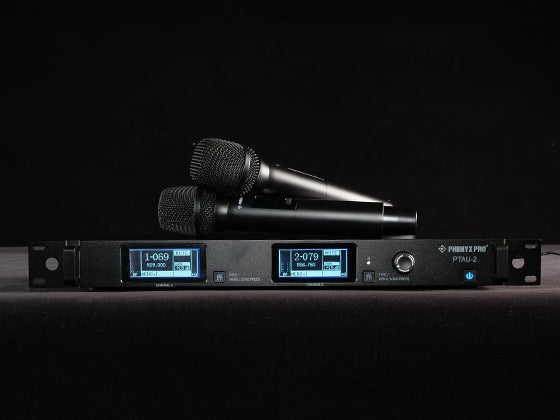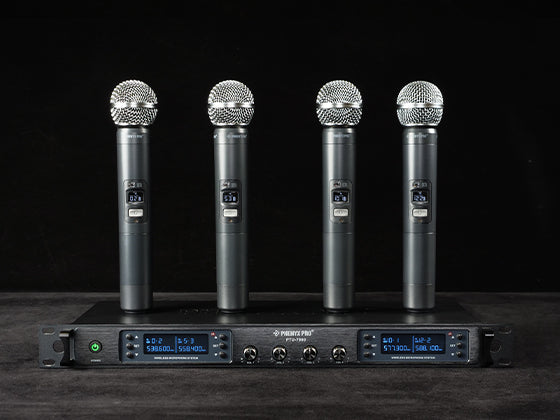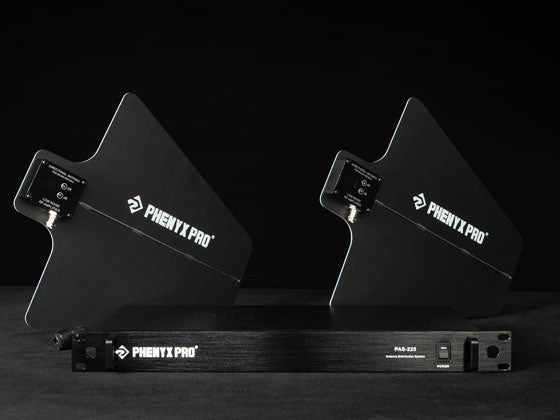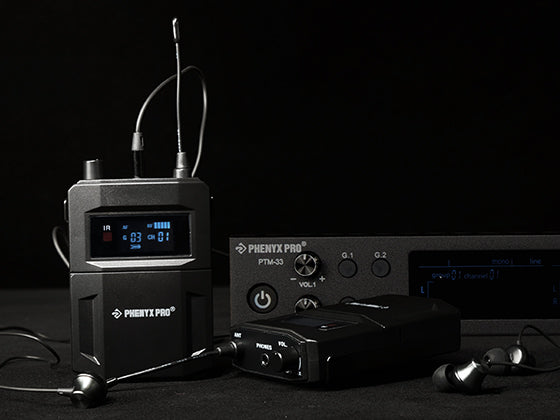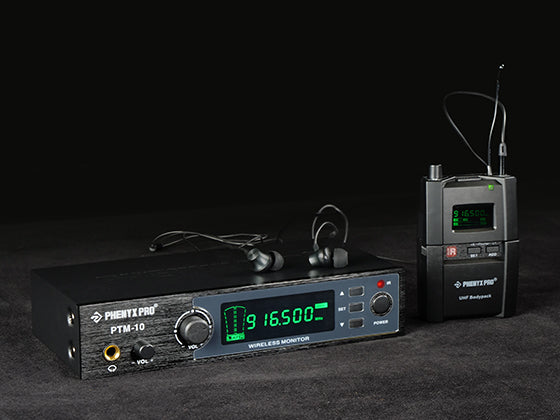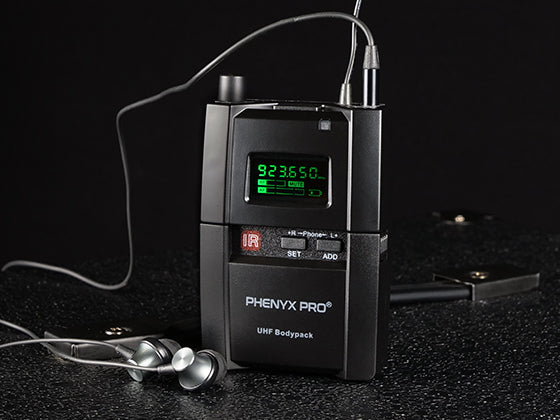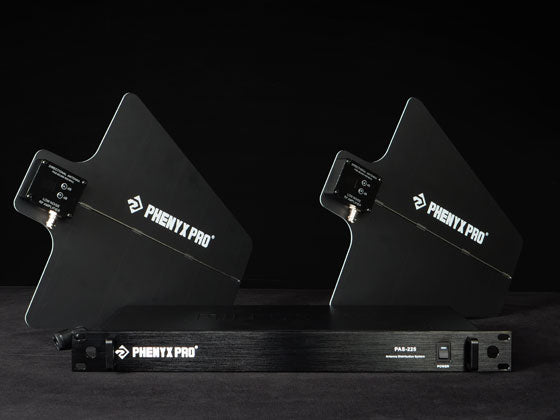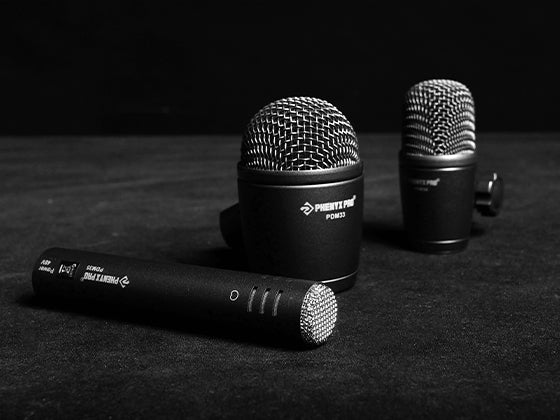Jocelyn
09-09-2022
All-around Comparison: PTU-71 Vs. PTU-2U
Which one is better, and what should be considered when choosing between the PTU-71 and PTU-2U? This blog renders helpful suggestions by thoroughly exploring their various distinctions.

From vocalists to pastors, most users give the Phenyx Pro’s PTU-71/7000/6000 Series a thumbs up on its stunning and enduring sounding experience during wedding parties in the yard, Sunday sermons in the church, or karaoke night in the club. However, when it comes to larger-scale events or stage performances where stability is crucial, the PTU-2U might be a better option, thanks to our cutting-edge true diversity technology.

Both the PTU-71 and PTU-2U are dual channel wireless microphone systems with adjustable frequencies in the 500MHz UHF band and adopt IR synchronization to pair up the receiver and transmitters, while the significant differences in between are the true diversity circuitry and the 1000 selectable frequency groups of the PTU-2U that jointly provide unbeatable stability. To get more information, let’s dive into their detailed distinctions to see which is more competitive.

Contest 1: Stability
True diversity. The PTU-2U adopts the true diversity circuitry that employs powerful core processors to automatically detect and select the stronger signal to use, ideally preventing feedback and dropouts. With such a design, each channel has two independent receiver processors, respectively, with two spaced-apart antennas. The unit continuously polls two processors to pick up audio signals transmitted from a wireless microphone and select the stronger one detected by the antenna. In this way, the system guarantees exceptionally stable signals in wireless performance since the exhibit of a cutoff in both antennas simultaneously is rare under usual situations.

Contest 2: Frequency Channel
Both the PTU-71 and PTU-2U provide selectable frequencies, which allows multiple systems to operate at the same time. The former has 100 adjustable frequency groups, while the latter offers 1000 tunable frequency groups and operates in the 500MHz frequency band, which provides more room for free tuning operation compared to the PTU-71. The 1000 tunable frequency groups across 25MHz bandwidth include 25 frequency banks with 40 preset frequencies each and 25kHz intervals between adjacent frequencies.

Some customers may question whether such large frequency banks are necessary or practical. However, when a plethora of wireless systems are operating in 500MHz UHF bandwidth in the same environment simultaneously, the PTU-2U can always find a suitable frequency to establish a connection with its flexible frequency groups.
Another question is whether there would be any interference occurring to the PTU-2U since all its frequency channels are in the 500MHz bandwidth. Actually, such concern is rational, but we can let its automatic frequency search function get the job done. Its auto-scan function can automatically navigate the complex RF environment and search for the best available frequency with a certain distance away from the occupied frequencies for you to use. Ultimately, the PTU-2U can secure stability as much as possible.
Contest 3: Sound Quality
The sound characteristic of a microphone is highly related to its polar pattern and frequency response.
The polar pattern, or pickup mode, manifests how pristine the sound a mic can capture and how many off-axis noises it can reject. Microphones with different pickup modes are used for various occasions. In live performance, people might prefer a cardioid polar pattern microphone because it can selectively pick up the most sound from the direct front of the mic while naturally rejecting ambient noises that are not in the range because of off-axis rejection.

Both the PTU-71 and PTU-2U microphones adopt the cardioid polar pattern to maximize audio clarity. From the diagram of their pickup mode below, the PTU-2U microphone has a slightly wider pickup range. Practically, it will prevent your voice from turning too faint when you move your mic away to hit high notes. Instead, the PTU-71 mic, the less sensitive one, filters pops sound and unwanted noises from more powerful voices or boisterous surroundings.

Besides the polar pattern, frequency response is also an essential factor. The 20Hz to 20kHz frequency range is the ultimate range the human ear can commonly register. From the graphs below, the PTU-2U and PTU-71 mics share the same frequency range, 50Hz to 18kHz. They are able to capture most vocals and instrument sounds.
We tested both microphones with the same audio input and obtained the output frequency response curves, respectively.


Generally speaking, both mics boast a good gain and can deliver smooth original sound, while the PTU-2U mic has slighter decibel differences at about ±3dB than that of the PTU-71, which indicates the PTU-2U can deliver brighter, smoother and fuller sound.
In detail, the PTU-71 mic has a larger decrease in sensitivity in the low frequency range, and a significant increase of gain in the mid-to-high range. Thus, the PTU-71 renders significant brightness in sound quality. Compared to the PTU-71, the PTU-2U maintains smooth frequency response in all frequencies since it has better gain. It can deliver a more stable and fuller sound performance with surprising details at high volume.
Other Differences
Surface. Both the PTU-71 and the PTU-2U are full metal housing while the PTU-2U handheld transmitter has a matte surface and heavier hand feel.
Rubber Feet. The PTU-71 receiver has four fixed rubber feet to stand well. However, the PTU-2U gets rid of them to facilitate the workflow to be put on the rack. It also comes with detachable rubber feet in case users want to put it on the desk instead.

Functions. PTU-71 has the auto-scan function for hassle-free automatic frequency management and the lock function to secure receiver settings. In contrast, the PTU-2U embraces both functions and an extra function, SQL setting, specially for adjusting the squelch level (totally 3 level settings) to reduce white noise for purer sound delivery.



Other Differences
To put it in a nutshell, the PTU-71 is a recommended choice for those who do not want to worry about the stability of a fixed frequency system and need a decent gear to operate in DJ parties, weddings, churches, and other small to medium situations. We also provide the quad version PTU-7000 and eight-channel version PTU-6000, available on Phenyx Pro’s official website.
On the other hand, demanding veterans would prefer the PTU-2U when they are rummaging a great cordless system to give a perfect performance on live, gigs, or other mid-to-large stages.
You can also read the table below to better thoroughly visualize their differences.
| Table header 0 | PTU-71 | PTU-2U |
|---|---|---|
| Number of Channels | 2 | 2 |
| Frequency Type | UHF Adjustable Frequencies | UHF Adjustable Frequencies |
| Number of Frequencies | 2 x 100 | 2 x 1000 |
| Synchronization Mode | IR Synchronization | IR Synchronization |
| Material | Metal | Metal |
| Coverage Distance | 100m/328ft | 100m/328ft |
| Lock Function | √ | √ |
| Auto-scan Function | √ | √ |
| SQL Setting | × | √ |
We also offer accessories below for you to customize your system.
Author

Jocelyn

